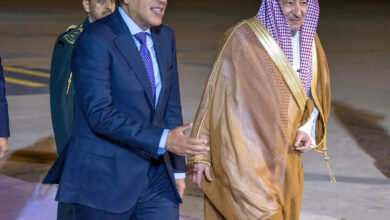
Mubariz Gafarov
Different leadership theories talk about different qualities that one requires to be a leader. Gary Yukl defines that a leader should have qualities such as motives, personality, values, confidence, expertise, behavior, honesty, integrity, and tactics to influence followers (Yukl, 2010). However, Dwight D Eisenhower put it correctly, when he said, “Leadership is the art of getting someone else to do something you want done because he wants to do it” (Bacharach, 2013). Figure 1 is a video by Brian Tracy who talks about the top qualities of a leader. According to him, leaders are self-made and not born. They do this by first developing their managerial skills, copying other successful leaders, and continually improving themselves. Leaders focus on their strengths and the strengths of their followers. Leaders cannot become great by compensating on their weaknesses but by strengthening their strengths. One only has to be great in two or three areas to be a great leader. A leader has to be role model that everybody looks up to. So, effective leaders carry themselves when no one is watching as if everyone is watching. A leader should encourage his followers by frequently providing positive comments or genuine praise to his followers. A leader should practice integrity.
According to me, true leaders have to inspire. People who have the passion, purpose, vision, capability to listen, and a real interest in helping his or her followers to grow, can be inspirational leaders. They should have the capability to communicate clearly, have integrity, should not be narrow-minded, and be sensitive to the needs of the followers (Heathfield, 2016).
Leaders can be autocratic where the leader holds all the authority. Hitler and Donald Trump are examples of autocratic leadership. Democratic leaders allow followers in decision-making. Examples of democratic leadership are Roosevelt and Kennedy. A strategic leader tries to fill the gaps in capabilities by setting down some rules. Examples of strategic leaders are most CEOs of the organizations. Transformational leaders change their organizations completely. Examples include Steve Jobs of Apple Computers and Henry Ford. Facilitative leaders depend on measurements and outcomes and by understanding and motivating the followers. Most successful managers who work in large organizations have this skill to some extent. Laissez-Faire leadership gives authority to followers with no control over them. Herbert Hoover and Queen Victoria are examples of such leaders. Transactional leaders keep the current state and leaders exchange rewards with followers for obedience. Examples of transactional leaders are Bill Gates and Howard Schultz. Charismatic leaders have followers based on their personal skills. Examples of charismatic leaders are Mahatma Gandhi and Winston Churchill (Raza, 2017).
I realized that my leadership style was transactional leadership. I used to be very fair in rewarding good behavior and punishing bad behavior. I was only interested in my team members’ work and I did not take any interest in their goals and dreams. I thought taking interest in their personal issues was not good. I was able to motivate them to complete their work on time and deliver a good quality work product. My friends and colleagues pointed to me that I was being a transactional leader and that I had certain areas to improve. I started paying close attention to other famous leaders, took some leadership courses, and did leadership exercises. I came to know that I wanted to be a transformational leader like Henry Ford.
A transformational leader must have a clear vision. They should have the ability to communicate this vision to their team clearly. Therefore, I should develop myself so that I can become capable of having a vision. I will improve my communication skills by attending courses and practicing communication skills. A transformational leader should have courage so I will try to be courageous when I am faced with tough situations. Transformational leaders need self-motivation and are capable of inspiring others. They should know their people well. It means that I would have to move closely with my team members and know their dreams, goals, and desires. I should provide means for them to achieve them. This will enable them to grow personally. This will increase their motivation. I myself will become a standard in integrity, honesty, and hard work so that I can become their role model (Hogg, 2016).
I will educate myself so that I know what are the qualities required for a leader and constantly compare myself. I will take 3600 feedback (Figure 2) from my superiors, colleagues, and team members so that I can find out where I have problems and work to get rid of those problems.



